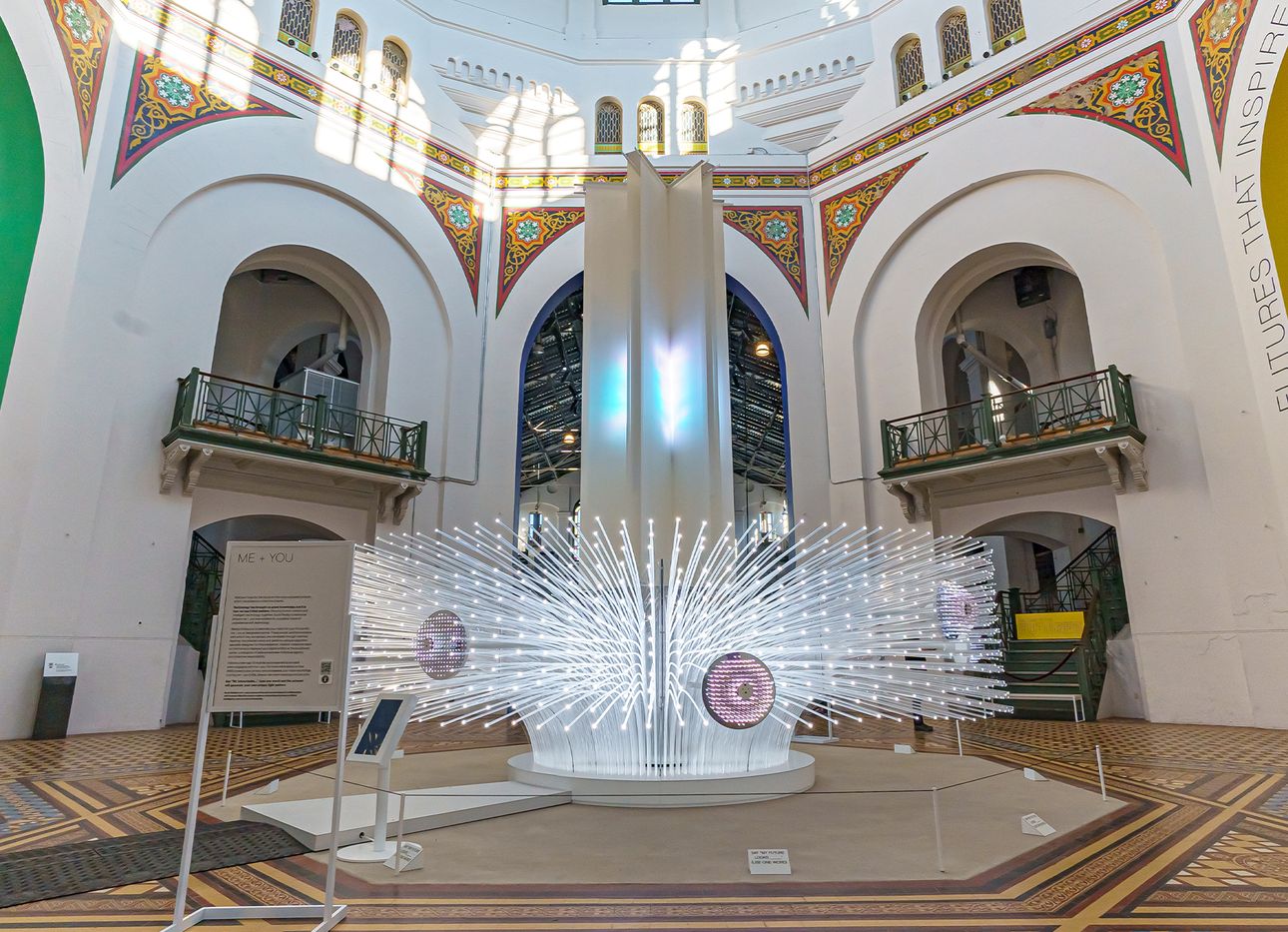
This Sculpture Wants to Know How the Future Makes You Feel
In a single word, how does the future make you feel? A towering sculpture by architect Suchi Reddy, founder of the New York firm Reddymade, asks viewers to speak their answers into its base, then transforms them into a spectacle of color and light.
The two-story work, titled “Me + You,” is the centerpiece of “Futures,” a sprawling exhibition at the Smithsonian Arts and Industries Building (AIB) in Washington, D.C., that comprises nearly 150 objects, prototypes, and installations that consider the possibilities of tomorrow. The building-wide show, which opened in November and runs through July 6, is curated by a multidisciplinary team of experts (including Glenn Adamson, who spoke about the effort on Ep. 50 of our Time Sensitive podcast) and was designed by Rockwell Group. It marks two occasions: the reopening of the building, which closed in 2004 for renovations due to structural concerns, as well as the Smithsonian’s 175th anniversary.
Looking to the future has always been at the core of the AIB. Completed in 1881 by architects Adolf Cluss and Paul Schulze as the country’s first national museum, it has since presented some of the most ambitious inventions of the day, including the first telephone, the Apollo rockets, and Edison’s light bulb.
Reddy’s installation brings its own kind of light to the building’s rotunda. Made of acrylic and washi paper, “Me + You” operates using A.I. cloud technology developed by Reddy’s team in collaboration with Amazon Web Services. Once a word is spoken into one of the listening docks placed around the bottom of the sculpture, it analyzes that word’s meaning, tone, and sentiment, then reflects it back in kinetic explosions of colored light. Words the A.I. deems hopeful or serene prompt soothing hues of cerulean and absinthe green, while terms of anger or disdain produce warmer tones. (If someone utters a profanity, the piece turns a fiery red.) The colors then flow into a central totem, where they become part of an illuminated tapestry that continuously shifts in tint and pattern.
For those who can’t visit the exhibition in person, Reddy’s team translated “Me + You”’s technology into a corresponding website, where visitors can enter their one-word answer about the future and watch it become part of a pulsating, multicolored form. The site also displays terms being submitted by other users, revealing the many moods of a given moment.
In person or online, looking at the installation’s vibrant well of emotions can be a humbling yet optimistic experience. The technology visually unifies participants, demonstrating how a single voice can affect a greater whole. “My hope,” Reddy says of the sculpture, “is that people become more aware of their agency—and responsibility—in shaping their individual and collective futures.”